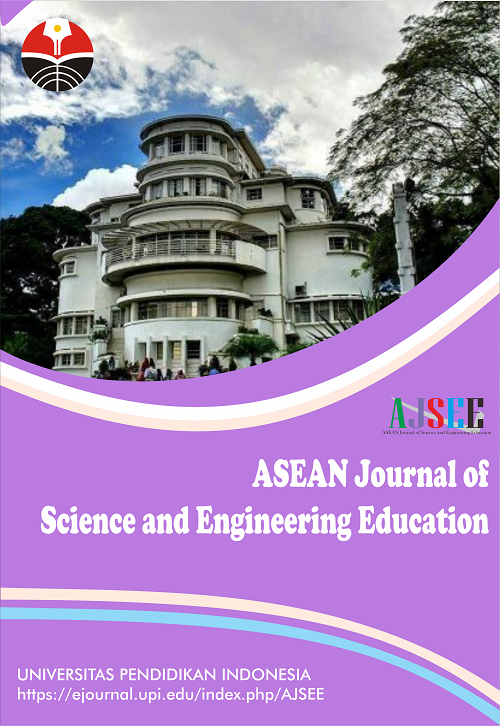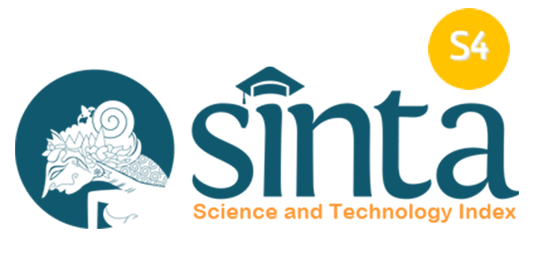Portfolio Workbook as an Effective Method for Student-Centered Learning of Chemical Engineering Principles
Abstract
Principles of Chemical Engineering (PCE) course is a core and highly important subject to study Chemical Engineering program that caters most fundamental concepts that bridge science to engineering. This study assess the effectiveness of portfolio workbook as a strategy to enhance student active learning in PCE. It was implemented for a full-semester and the student feedbacks on perceptions and implementation of the method was obtained after the course was completed. Results show that most participant agreed on the imposing mark on the workbook to enhance their study motivation. Vast majority of the students (>82%) admit that the workbook significantly helped them in mastering the subject, thus recommended the method for other subjects (>85%). The workbook as well as the method implementation can further be improved by providing short-answer as well as more intense scaffolding.
Keywords
Full Text:
PDFReferences
Aldahmash, A. H., and Abraham, M. R. (2009). Kinetic versus Static Visuals for Facilitating College Students’ Understanding of Organic Reaction Mechanisms in Chemistry. Journal of Chemical Education, 86(12), 1442.
Carlson, K. A., and Winquist, J. R. (2011). Evaluating an Active Learning Approach to Teaching Introductory Statistics: A Classroom Workbook Approach. Journal of Statistics Education, 19(1), 1.
Coffey, A. (2005). The clinical learning portfolio: A practice development experience in gerontological nursing. Journal of Clinical Nursing, 14(2005), 75–83.
Eilks, I., and Byers, B. (2015). Innovative methods of teaching and learning chemistry in higher education. (Eds.). New York. Cambridge: Royal Society of Chemistry
Jasper, M. (1995). The portfolioworkbook as a strategy for student-centred learning. Nurse Education Today, 15(6), 446–451.
Johnson, L. E., and Engel, T. (2011). Integrating Computational Chemistry into the Physical Chemistry Curriculum. Journal of Chemical Education, 88(5), 569–573.
Jones, L. L., & Kelly, R. M. (2015). Visualization: The Key to Understanding Chemistry Concepts. In M. V. Orna (Ed.), ACS Symposium Series, 1208(2015), 121–140.
Kelly, O. C., and Finlayson, O. E. (2007). Providing solutions through problem-based learning for the undergraduate 1st year chemistry laboratory. Chem. Educ. Res. Pract., 8(3), 347–361.
McMullan, M., Endacott, R., Gray, M. A., Jasper, M., Miller, C. M. L., Scholes, J., and Webb, C. (2003). Portfolios and assessment of competence: A review of the literature. Journal of Advanced Nursing, 41(3), 283–294.
Moore, E. B., Chamberlain, J. M., Parson, R., & Perkins, K. K. (2014). PhET Interactive Simulations: Transformative Tools for Teaching Chemistry. Journal of Chemical Education, 91(8), 1191–1197.
Nainggolan, B., Hutabarat, W., Situmorang, M., & Sitorus, M. (2020). Developing Innovative Chemistry Laboratory Workbook Integrated with Project-Based Learning and Character-Based Chemistry. International Journal of Instruction, 13(3), 895-908.
Plass, J. L., Milne, C., Homer, B. D., Schwartz, R. N., Hayward, E. O., Jordan, T., and Barrientos, J. (2012). Investigating the effectiveness of computer simulations for chemistry learning. Journal of Research in Science Teaching, 49(3), 394–419.
Stieff, M., & Wilensky, U. (2003). Connected Chemistry—Incorporating Interactive Simulations into the Chemistry Classroom. Journal of Science Education and Technology, 12(3), 285–302.
Tan, K. C. D., & Kim, M. (2012). Issues and Challenges in Science Education Research: Moving Forward. In Springer Science & Business Media. (Chapter 1, pp. 1-4). New York: Springer.
Tasker, R. (2005). Using multimedia to visualize the molecular world: Educational theory into practice. In Chemists’ Guide to Effective Teaching, (Chapter 16, pp. 195 – 211). USA: Pearsom Prentice Hall.
Tsaparlis, G., & Finlayson, O. E. (2014). Physical chemistry education: Its multiple facets and aspects. Chem. Educ. Res. Pract., 15(3), 257–265.
DOI: https://doi.org/10.17509/ajsee.v1i1.32404
Refbacks
- There are currently no refbacks.
Copyright (c) 2021 Universitas Pendidikan Indonesia

This work is licensed under a Creative Commons Attribution-ShareAlike 4.0 International License.














